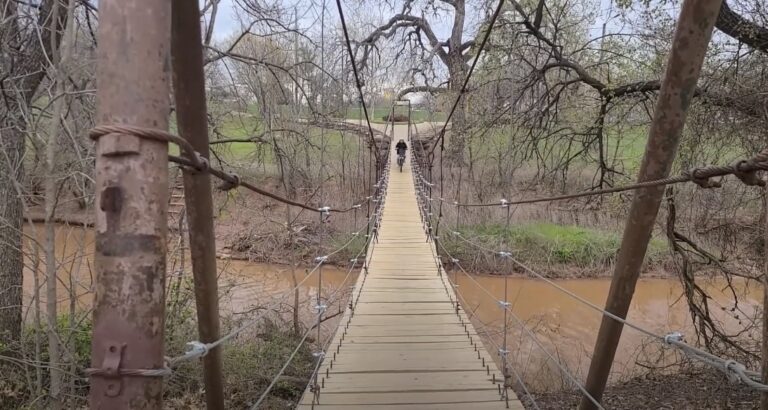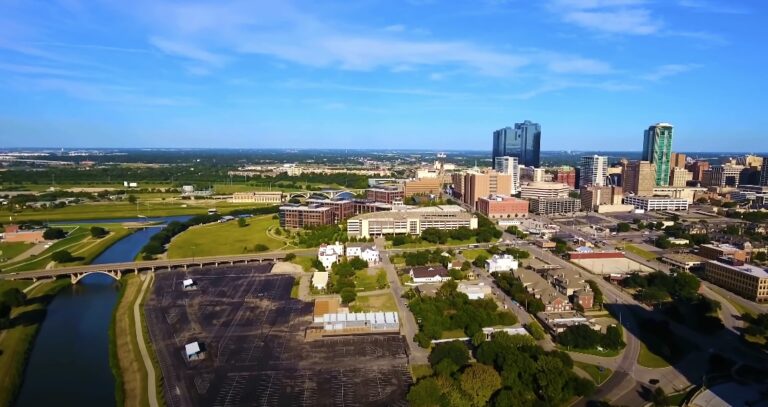Dallas, Texas, might be best known for its urban sprawl, iconic skyline, and rich history, but there’s more to this dynamic city than meets the eye. Among its treasures are some of the state’s finest national parks, and oases of natural beauty amidst the bustling urban environment. Let’s dive into the world of national parks in Dallas, Texas, and find out what makes them such an essential part of the city’s fabric.
The Gems of Dallas: Noteworthy National Parks
While Dallas itself does not house any ‘national parks’ in the traditional sense, the surrounding region boasts several national sites, recreation areas, and state parks that deserve mention. Here are some standout places that capture the essence of “national parks in Dallas, Texas” sentiment:
Big Thicket National Preserve
Approximately a 3-hour drive from Dallas, situated in the southeastern part of Texas. Often referred to as “America’s Ark,” Big Thicket National Preserve is a vast and biodiverse wilderness that covers over 113,000 acres. Its nickname is well-deserved, as this preserve is home to an incredible variety of plant and animal species, showcasing a range of ecosystems, including pine forests, swamps, and more. Let’s take a closer look at the captivating aspects of Big Thicket:
- Biodiversity: Big Thicket is a biodiversity hotspot, hosting a stunning array of plant and animal species. Botanists can marvel at the presence of carnivorous plants, orchids, and the elusive eastern diamondback rattlesnake. Birdwatchers will be equally thrilled by the numerous avian species that call this place home.
- Hiking Trails: For those looking to explore on foot, the preserve offers a network of well-maintained hiking trails that cater to all skill levels. These trails wind through dense forests, wetlands, and bottomland hardwoods, providing opportunities to immerse oneself in nature’s splendor.
- Canoeing and Kayaking: Paddlers can venture down the Neches River or Village Creek, both of which flow through the preserve. Canoeing and kayaking are fantastic ways to experience the unique aquatic ecosystems and lush landscapes of Big Thicket.
- Wildlife Observation: Wildlife enthusiasts can enjoy sightings of white-tailed deer, armadillos, bobcats, and even the elusive red-cockaded woodpecker. The preserve provides excellent opportunities for wildlife observation and photography.
Lake Ray Roberts State Park
Located approximately an hour’s drive north of Dallas, near the town of Pilot Point. Lake Ray Roberts State Park offers a diverse range of recreational activities, making it a prime destination for those seeking a natural escape from the city. Whether you enjoy hiking, bird-watching, or fishing, this park has something to offer for every nature enthusiast:
- Hiking and Trails: The park features an extensive network of trails, covering over 20 miles, suitable for hikers and equestrians alike. These trails wind through woodlands and grasslands, and along the picturesque shoreline of Lake Ray Roberts, offering diverse landscapes and scenic vistas.
- Bird-Watching: With its diverse habitats, the park is a haven for bird watchers. Visitors can spot a wide array of bird species, including bald eagles, great blue herons, and a variety of waterfowl. Be sure to bring your binoculars and bird guidebook for an enriching birding experience.
- Fishing: Lake Ray Roberts is renowned for its fishing opportunities. Anglers can try their luck at catching largemouth bass, catfish, crappie, and more. The park provides fishing docks and piers for easy access to the lake’s abundant fish population.
- Camping: For those looking to extend their stay and immerse themselves fully in the natural surroundings, the park offers both tent and RV camping facilities. Wake up to the beauty of the lakefront and enjoy the serenity of nature.
Cedar Hill State Park
Situated just a short drive from Dallas, Cedar Hill State Park is located near Joe Pool Lake, making it a favorite among Dallas residents. Cedar Hill State Park offers a serene and picturesque setting for outdoor activities, drawing in nature enthusiasts, campers, and families looking for a day of recreation. Let’s explore the attractions and activities that make Cedar Hill State Park stand out:
- Picnicking: The park boasts numerous scenic picnic areas with tables and grills, making it an ideal spot for a leisurely outdoor meal with family and friends. Enjoy your lunch while surrounded by the natural beauty of the park.
- Camping: Campers can choose from a variety of camping options, including tent and RV sites, some of which offer stunning lakefront views. Falling asleep to the sounds of nature and waking up to the sun rising over the water is a memorable experience.
- Water Activities: Joe Pool Lake provides ample opportunities for water-based activities. Visitors can indulge in boating, swimming, and fishing. Boat ramps are available for those with their own watercraft, making it convenient to explore the expansive lake.
- Hiking and Biking: Explore the park’s hiking and biking trails, which wind through wooded areas, providing glimpses of local wildlife and beautiful vistas. Whether you prefer a leisurely stroll or an invigorating bike ride, the trails offer a chance to reconnect with nature.
Dinosaur Valley State Park
Located a little over an hour southwest of Dallas in Glen Rose, Dinosaur Valley State Park is an absolute must-visit for both nature and history enthusiasts. As the name suggests, this park is famous for its preserved dinosaur tracks, but there’s so much more to experience. Here’s a breakdown of the exciting facets of Dinosaur Valley:
- Dinosaur Tracks: The park’s claim to fame, the ancient footprints of dinosaurs, can be seen in the bed of the Paluxy River. These tracks are believed to be from the early Cretaceous period, making them over 100 million years old. They provide a tangible link to the prehistoric world and serve as a fascinating glimpse into the lives of these ancient creatures.
- Hiking Trails: With over 20 miles of trails, ranging from easy to challenging, visitors can explore diverse terrains, including rugged landscapes, limestone cliffs, and scenic overlooks. Each trail offers unique views and experiences, with many leading to the dinosaur track sites.
- Paluxy River: This beautiful river meanders through the park and is not just a site for dinosaur tracks. It’s also a favorite spot for swimming, fishing, and simply cooling off on a hot Texas day. The clear waters and serene surroundings make it a peaceful retreat.
- Camping: Whether you’re into primitive camping or want a bit more comfort, the park has options to suit every preference. The campgrounds are well-maintained and provide a great base to explore all that Dinosaur Valley has to offer.
- Educational Programs: The park rangers often conduct guided tours and educational programs, particularly focusing on the rich paleontological history of the region. These programs are both informative and engaging, making them perfect for visitors of all ages.
Why Visit National Parks in Dallas, Texas?

Whether you’re interested in exploring diverse ecosystems, engaging in recreational activities, or learning about conservation, visiting the national parks in Dallas is a rewarding experience. Let’s delve into the compelling reasons why you should consider exploring these parks.
Diverse Ecosystems
One of the primary reasons to visit national parks in Dallas, Texas, is the opportunity to immerse yourself in a rich tapestry of ecosystems. From thickets and swamps to lakes and prairies, these parks showcase the remarkable biodiversity that thrives in the region. Let’s take a closer look at some of the key ecosystems you can discover:
| Ecosystem | Description |
| Thickets and Swamps | Explore dense, lush vegetation and wetlands teeming with birdlife, amphibians, and reptiles. |
| Lakes and Rivers | Enjoy water-based activities such as fishing, boating, and kayaking while appreciating serene lakes and rivers. |
| Prairies and Meadows | Wander through open grasslands adorned with wildflowers and spot native wildlife like deer and prairie dogs. |
Visiting these ecosystems allows you to gain a deeper appreciation of the natural world and its intricate balance.
Recreational Activities
National parks in Dallas offer an array of recreational activities catering to diverse interests. Whether you’re an outdoor adventurer, a bird watching enthusiast, or simply seeking a peaceful day by the lake, you’ll find something to suit your preferences. Here’s a breakdown of the recreational activities available:
- Hiking and Trail Exploration: Lace up your hiking boots and embark on scenic trails that wind through forests and prairies, providing opportunities for exercise and discovery.
- Birdwatching: Dallas is a birdwatcher’s paradise, with numerous species to observe. Bring your binoculars and camera to capture the beauty of local and migratory birds.
- Fishing: The lakes and rivers in Dallas national parks offer excellent fishing opportunities. Cast your line and try your luck at catching bass, catfish, and more.
- Boating and Kayaking: Rent a boat or kayak and glide across tranquil waters while soaking in the picturesque surroundings.
- Picnicking: Enjoy a relaxing picnic with friends and family amidst the natural beauty of the parks. Many areas provide picnic tables and grills for your convenience.
- Camping: For those seeking an overnight adventure, some parks offer camping facilities where you can immerse yourself in the great outdoors.
Education and Preservation
National parks in Dallas, Texas, are not just recreational spaces; they are hubs of education and conservation efforts. These parks play a pivotal role in raising awareness about environmental preservation and the importance of protecting natural resources. Here’s how they contribute to education and preservation:
- Visitor Centers: Most parks have visitor centers with informative exhibits, interactive displays, and knowledgeable staff who can answer your questions about the local environment and wildlife.
- Guided Tours: Join guided tours led by experts who share their insights about the ecosystems, geology, and history of the area.
- Environmental Programs: Many parks organize educational programs and workshops for visitors of all ages, focusing on topics like ecology, wildlife, and sustainable practices.
Conservation and Preservation
- Habitat Protection: National parks serve as sanctuaries for native flora and fauna, safeguarding critical habitats from urban development.
- Research: They often host research projects that contribute to our understanding of regional ecosystems and support conservation efforts.
- Sustainable Practices: Parks promote sustainable practices such as recycling, reducing waste, and preserving dark skies to minimize their ecological footprint.
By visiting these national parks, you not only enjoy the natural beauty of Dallas but also become a part of the ongoing efforts to conserve and protect the environment for future generations.
Making the Most of Your Visit

To ensure you make the most of your visit, it’s essential to be well-prepared and mindful of the park’s rules and the environment. Here are some valuable tips to help you have a safe and enjoyable time:
Plan Ahead
National parks in Dallas can be popular destinations, especially during peak seasons. Planning ahead will enhance your visit’s quality and reduce the chances of encountering unexpected issues. Here’s what you can do:
- Check Park Information: Before your trip, gather information about the park’s operating hours, entrance fees, and any special events or programs.
- Make Reservations: If the park offers camping or lodging facilities, consider making reservations in advance, as they can fill up quickly during busy times.
- Trail Maps: Obtain trail maps and familiarize yourself with the park’s layout to ensure you don’t get lost during your exploration.
Follow Park Guidelines
Respecting the rules and regulations of the national parks is crucial for both your safety and the preservation of these natural treasures. Common guidelines include:
- Stay on Marked Trails: Straying off designated paths can harm fragile ecosystems and disturb wildlife. Stick to marked trails to minimize your impact.
- Pack Out What You Bring: Practice Leave No Trace principles by taking all your trash with you and disposing of it properly.
- Pet Policies: If you’re bringing pets, adhere to the park’s pet policies, which often require pets to be on a leash and restrict them from certain areas.
- Campfire Regulations: If camping is part of your itinerary, check the park’s campfire regulations and follow them diligently to prevent wildfires.
Stay Hydrated
The Texas heat can be intense, especially during the summer months. Staying hydrated is essential to prevent heat-related illnesses and ensure you enjoy your visit comfortably. Here’s how to stay hydrated:
- Water Supply: Carry an ample supply of water with you, and drink regularly, even if you don’t feel thirsty.
- Reusable Water Bottle: Consider using a reusable water bottle to minimize plastic waste and ensure you have water readily available.
- Hydration Packs: Hydration packs with a built-in water reservoir can be convenient for longer hikes.
Respect Wildlife
Encountering wildlife is one of the highlights of visiting national parks, but it’s vital to interact with them responsibly and ethically. Keep these guidelines in mind:
- Observation from a Distance: Maintain a safe distance from animals and use binoculars or telephoto lenses for close-up views. Approaching wildlife can be dangerous and stressful for them.
- Do Not Feed Wildlife: Feeding animals can disrupt their natural behaviors, harm their health, and even lead to conflicts. Never feed wildlife, intentionally or unintentionally.
- Quiet and Calm: Keep noise levels down to avoid startling animals. Silence your phone, speak in hushed tones, and be patient for wildlife to come to you.
Conclusion
The magic of national parks in Dallas, Texas, lies not just in their natural beauty but in the experiences they offer. Whether you’re a Dallas resident or a tourist, make it a point to explore these oases of serenity and take a break from the urban hustle. They remind us of the delicate balance between urbanization and conservation, and the responsibility we bear towards preserving these natural treasures for future generations.
FAQs
1. Are there any actual ‘national parks’ in Dallas, Texas?
While Dallas doesn’t house any national parks within its city limits, the surrounding areas have a rich array of national preserves, recreation areas, and state parks worth exploring.
2. Are pets allowed in these parks?
Policies can vary from one park to another. Always check the specific park’s guidelines before bringing your pet along.
3. How can I support the conservation efforts of these parks?
Many parks have volunteering opportunities or programs where you can donate. Additionally, simply following park guidelines and practicing responsible tourism helps.
4. Is camping available in these parks?
Some parks, like Cedar Hill State Park, offer camping facilities. It’s advisable to check in advance and make reservations if needed.
5. Are there any guided tours available?
Several parks offer guided tours, especially during peak seasons. These can be a fantastic way to learn more about the park’s history, flora, and fauna.






